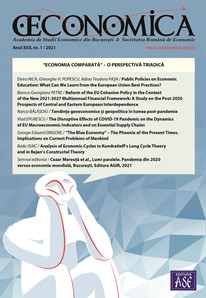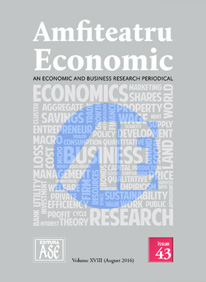
The Usefulness of the Danube Strategy for the 16+1 Mechanism and the Belt and Road Initiative
On the initiative of the People’s Republic of China aimed at intensifying and expanding cooperation with 11 EU member and 5 non-EU member states all in Eastern and South-East Europe the so-called “16+1” mechanism for cooperation was established. It embraces several fields, from investments, transport and finance, to science, education and culture. In the framework of the initiative, China has defined three potential priority areas for economic cooperation: infrastructure, high technologies and green technologies. For ensuring continuous development of the cooperation, a platform of regular meetings was established in 2012. At these meetings, the Chinese Prime Minister meets once a year with the leaders of the 16 countries. Upon the “16+1” mechanism the “Belt and Road Initiative” (BRI) of China got a strong support for realization in Eastern and South-Eastern Europe.
In 2011, China revived its co-operation with a group of 16 Central and Eastern European countries (CEECs), namely Albania, Bosnia and Herzegovina, Bulgaria, Croatia, the Czech Republic, Estonia, Hungary, Latvia, Lithuania, Macedonia, Montenegro, Poland, Romania, Serbia, Slovakia and Slovenia. In 2012, the first meeting at the heads of government level was held in Warsaw, marking the official launch of the 16+1 format or mechanism under which China provides preferential financing to support investment projects that use Chinese inputs such as equipment “through business means”[1]. Current trade volume between China and its defined CEEC regional grouping (Central and Eastern European Countries) reaches US$60 billion, i.e. about 11% of its trade with the EU[2].
The Danube Strategy
On the other hand, the European Union’s Strategy for the Danube Region (EUSDR) sets the basis for the construction of the modern regional grouping in the international river basin of the Danube. The EU Strategy for the Danube Region provides strong support for the development of all countries of the Danube basin, regardless of whether they are Member States of the European Union or not, guided by the principles of responsible use of natural resources for sustainable development[3]. The river Danube itself represents the most complex natural resource for many areas of human activities, from economy and industry to culture and politics. The Danube has the drainage area of 816,960 square kilometers, making it the 32nd biggest river basin in the world.

The whole Danube basin is divided into three parts. The upper part of the basin has the area from Schwartzwald (Germany) to Bratislava (Slovakia), the middle part of the river basin is the largest one, and comprises the part from Bratislava to the estuary of the river Timok into the Danube. The major tributaries in this region are, from the left of the Danube, the Vah, Hron, Ipel and Tisza (the largest tributary in the whole Danube basin), and from the right, the rivers Leitha, Raba, Sio, Drava, Sava and Velika Morava. The lower part of the river basin has the area from the estuary of the river Timok into the Danube to its estuary into the Black Sea. It is formed by the Romanian-Bulgarian lowland and upland plateaus and mountains. Here, the Danube flows as an 800-meter-wide, slowly moving river with well-developed alluvial plains. The important tributaries in this region are, from the South, the Timok, Iskar, Ossam and Yantra rivers, and, from the North, the Jiu, Olt, Argeș, Ialomița rivers, and, the most important two, the Siret and Prut rivers.
The Danube represents not only a waterway for transportation and a natural border between states, which divides regions along national borders, but also a waterway connecting regions and a base of economic and cultural communication. Therefore, it was nominated as one of the European transport corridors, the Seventh, and the only water corridor. It is, at the same time, a corridor for energy (over a dozen nuclear reactors function in proximity of the Danube), trade, tourism and so on. The figure below details the multidimensionality of the Danube[4].

The natural and cultural wealth of the Danube Basin are extremely large. Despite current economic inequalities favoring the Central European portion occupied by Germany and Austria, the Danube region may be even richer in the middle and lower part of the basin than in the upper part. But it is very far from adequate and sustainable use. In spite of such huge riches and potential, the countries of the Central and South-Eastern European region are still underdeveloped in comparison with the upper Danube countries. Therefore, the EUSDR itself has the aim and task to support the development of these countries. Yet, it has no special financial means and appropriations for that, nor the opportunity to introduce new legislative projects in its favor. It is simply an overarching means of coordinating activities in multiple areas, while countries continue to pursue EU funding from traditional sources.
This situation forced the countries to develop their projects, and that has resulted in additional skills for developing projects upon newly gained awareness that regional, sub-regional and inter- regional cooperation mechanisms have the utmost importance for overcoming the tensions created as a result of the region’s historical dynamic.
Possible synergies
The experiences of multilateral economic and cultural cooperation in the framework of the EUSDR leads to a positive secondary effect of openness towards other initiatives for international economic cooperation. The wealth in natural and cultural resources and, first of all, the strategic position of the region, are starting to attract attention for international, regional and inter-regional economic and cultural cooperation. Some of these fields are the priority area for the 16+1 mechanism, from investment, transport, and finance, to science, education, and culture. The Danube Strategy and the 16+1 have 10 states in common, an overlap significantly more extensive than that of any other EU macroregional strategy and Chinese initiative. The Danube Strategy’s inclusion of Moldova and Ukraine, places of significant economic potential combined with significant insecurity which the 16+1 does not include, then the strategic value of coordinating the initiatives and exploiting their synergies become even greater.
Therefore, it would be worthy to research more properly how the fields on which the EUSDR concentrate in its priority areas overlap with the aims of the 16+1.

The priorities of the EUSRD are elaborated in 11 priority areas of the four columns:
A) Connecting the Danube Region
1) To improve mobility and multimodality
2) To encourage more sustainable energy
3) To promote culture and tourism, people to people contacts
4) To promote awareness of the key issues affecting all countries in the Danube Region
B) Protecting the Environment in the Danube Region
1) To restore and maintain the quality of waters
2) To manage environmental risks
3) To preserve biodiversity, landscapes and the quality of air and soils
C) Building Prosperity in the Danube Region
1) To develop the Knowledge Society through research, education and information technologies
2) To support the competitiveness of enterprises, including cluster development
3) To invest in people and skills
4) To develop proper infrastructure for navigation and transport of goods
5) To counteract the economic, human and environmental effects of natural or man-made disasters
D) Strengthening the Danube Region
1) To step up institutional capacity and cooperation
2) To work together to promote security and tackle organized and serious crime
In the last 20 years, new challenges have manifested, in particular:
- Mobility: aside from the obvious importance of the Black Sea in international trade and Mediterranean access for various countries, the Danube River itself is a major TEN-T Corridor even though it is used way below its full capacity. Freight transported on the Danube is only 10%-20% of that on the Rhine. There is a particular need for greater multimodality, better interconnection with other river basins, modernising and extending infrastructure in transport nodes such as inland ports.
- Energy: Fragmented markets lead to higher costs, prices and reduced competition. Reliance on too few external suppliers increases vulnerability, as periodic winter crises testify. A greater diversity of supply through interconnections and genuine regional markets will increase energy security. Improved efficiency, including energy saving and more renewable sources, is crucial.
- Environment: the Danube Region is a major international hydrological basin and ecological corridor. This requires a regional approach to nature conservation, spatial planning and water management. Pollution does not respect national borders. Major problems such as untreated sewage and fertiliser and soil run-off make the Danube highly polluted. The environmental impact of transport links, tourist developments, or new energy-producing facilities must also be considered.
- Risks: major flooding, droughts, and industrial pollution events are all too frequent. Prevention, preparedness, resilience and effective reaction require a high degree of understanding, cooperation and information sharing.
- Socio-economic: the Region has very wide disparities. It has some of the most successful but also the poorest regions in the EU. In particular, contacts and cooperation are often lacking, both financially and institutionally. Enterprises do not sufficiently exploit the international dimension of marketing, innovation or research. The share of highly educated people in the Danube Region is lower than the EU27 average, again with a pronounced divide, with an extensive brain drain problem.
- Security and organized crime: significant problems persist. Trafficking in human beings and smuggling of goods are particular problems in several countries.
Coordination in addressing these challenges will serve not only the regional stakeholders, but also Chinese objectives of greater engagement with the region. For instance, the EUSDR defined, in 2016, new objectives for the 2020 timeframe in all of the Strategy pillars. Chinese awareness of these objectives in how it proposes new projects or coordinates with 16+1/EUSDR members to fit into a pre-existing identified need is an example of synergy. An example of the objectives in the mobility and energy areas can be seen below.

Conclusion
I am convinced that the synergy between the “16+1” and the EUSDR could bring huge success in achieving goals of the both mechanisms, the regional EUSDR and the interregional BRI, 16+1 forms of international cooperation. And the success of these cooperation mechanisms would bring to an end the unfortunate destiny of peoples on the Balkans (the middle Danube region), who were “trained” to be divided by religious and nationalistic ideologies throughout history, with wars even in the last decade of the 20th century. Whereas in other parts of Europe all kinds of regional cooperation gained space and richness of forms, in South-Eastern Europe the process was more or less delayed. In some countries people were miseducated in the process of manipulation by so called high intellectuals driven by nationalism and xenophobia.
Regional cooperation is urgently needed in all the countries of South-Eastern Europe in the fields of economy and protection of the environment. Regional cooperation initiatives based on the sustainable use of natural resources and the collective development of nations and the harnessing of their potential are vital to future prosperity in the region. With the Danube acting as a highway into the heart of Europe and a clear candidate for 16+1 attention even had the EU not developed a macroregional strategy for it, and given also its interface to the Black Sea and the added strategic value this gives it, the Danube Basin could become an important regional node in the Belt and Road Initiative. Cooperation, however, must not be confined to states and transnational companies, but also at the level of municipalities and counties.
[1] http://economists-pick-research.hktdc.com/business-news/article/Research-Articles/Belt-and-Road-Opportunities-in-Central-and-Eastern-Europe/rp/en/1/1X000000/1X0A7MSE.htm (25.08.2017)
[2] Li Keqiang, “Work Together to Open Up New Prospects for Win-Win Cooperation”, Fifth China and Central and Eastern European Nations Summit
[3] Edita Stojić-Karanović, Dragan Petrović., Dunavska strategija : od vizije ka ostvarenju / - Beograd : Institut za međunarodnu politiku i privredu : Međunarodni naučni forum "Dunav - reka saradnje", 2010
[4] Hans-Peter Hasenbichler, “The Danube Strategy – How to develop the region: Example Inland Waterways”, 2011, 8th Vienna Forum Presentation, http://www.vienna-economic-forum.com/uploads/media/Hasenbichler.pdf








